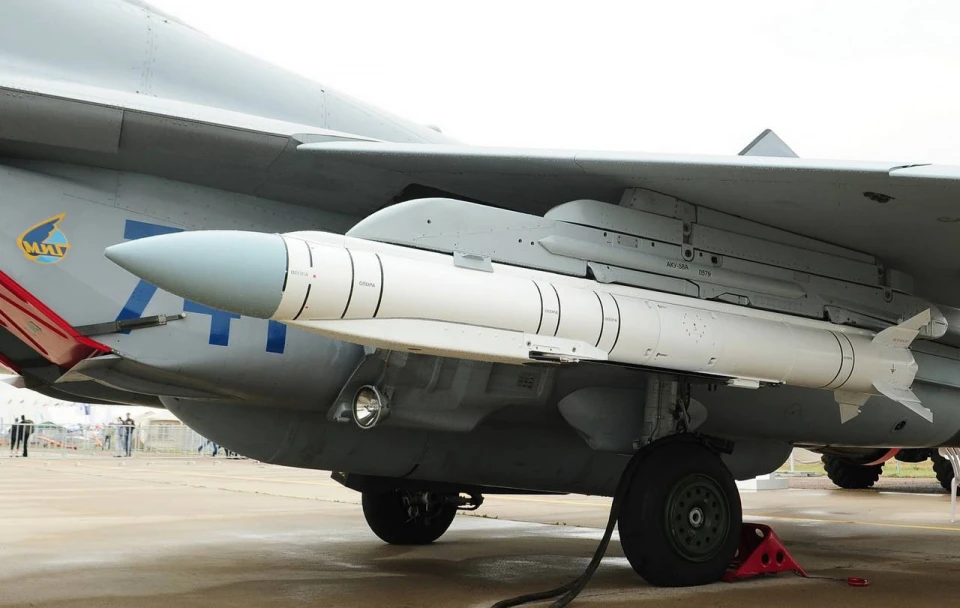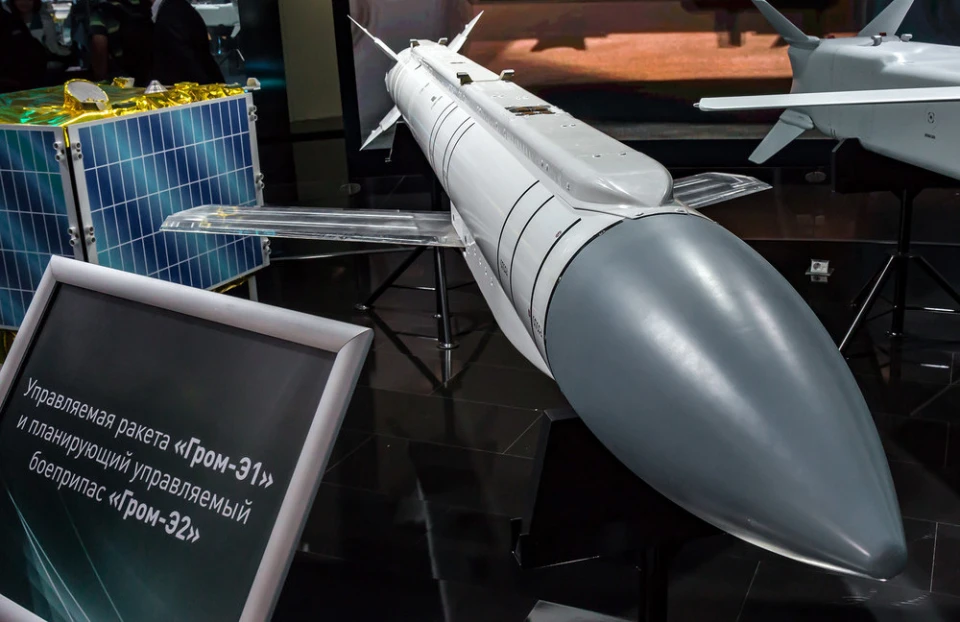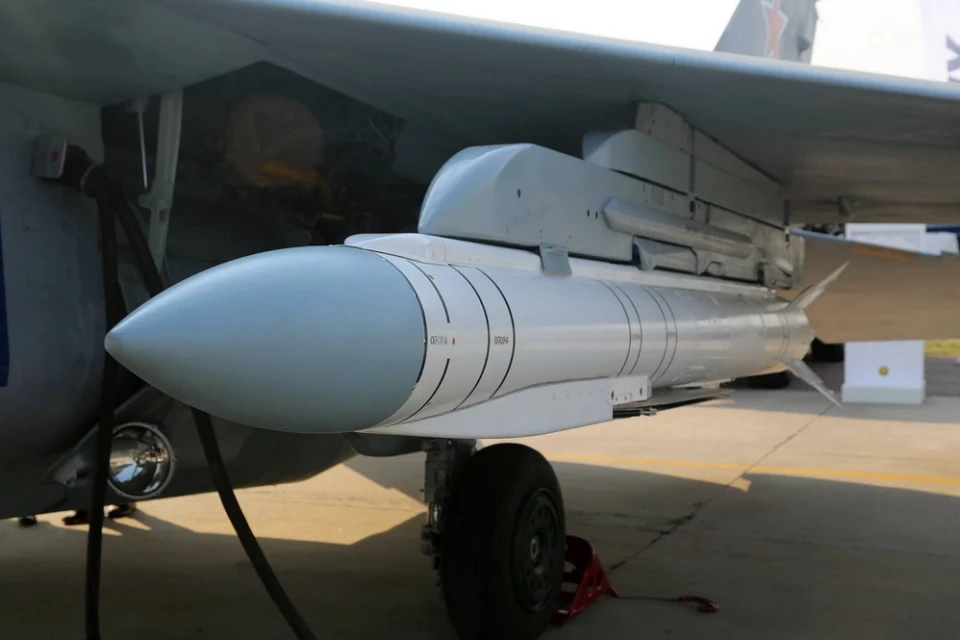
What is Russian Grom-1 missile that inflicts severe civilian casualties, outweighing military impact?
On February 2, the Russian army launched new high-precision Grom-1 air-to-ground missiles at a residential area in Kherson. This is the first documented case of the use of Grom in the Kherson direction. Previously, the remains of missiles were found in Donetsk and Kharkiv regions
Espreso explains the Grom-1 missile, touted by Russia as its latest weaponry, its technical characteristics and the threats posed by this missile.
The text covers:
- What is Grom-E1?
- Technical characteristics of the Grom-1 missile
- Use of the Grom-1 in Ukraine
- How to deal with the Grom-E1 missile
- How much danger do Grom-1 missiles pose?
What is Grom-E1?

Photo: from publicly available sources
Grom (Russian for "thunder") is a complex of missile and bomb weapons first presented at the MAKS-2015 international air show. However, they were officially adopted into service back in 2013.
The Grom-1 aircraft missile was developed for use with the new Su-57 fighter jets but has also been integrated into the weapon system of Su-34, Su-35, and Su-30 aircraft. The missile, weighing 594 kg (315 kg high-explosive warhead), is equipped with a rocket engine and can cover a distance of up to 120 km.
In essence, the Grom-E1 is a hybrid of a glide bomb and a missile, an attempt to turn high-explosive air bombs into precision weapons. This hybrid has wings that open in the air, providing range and accuracy. After being dropped, a launch rocket engine is activated, and after a while, the main rocket engine starts working. The bomb missile can descend on the target at a high angle.
The Russians classify it as an "air-launched guided missile". It is equipped with inertial and satellite guidance systems. This makes it possible to use the missile against stationary fixed targets, according to previously downloaded coordinates.
The Grom was created on the basis of the Kh-38 missile. Defense Express observers call the project "as strange as possible," because the Kh-38 itself has quite dangerous characteristics - supersonic speed at a range of up to 40 km.
"There is publicly available data that the Russian military-industrial complex can produce only a few Kh-38s every month, including 4 units in February. Against this background, it would seem more logical for them to focus on scaling up production of the Kh-38 instead of the Grom-E1," the article says.

Technical characteristics of the Grom-1 missile:
- Length - 4.2 m
- Diameter - 0.31 m
- Wingspan - 1.9 m
- Total weight - 594 kg
- Weight of the warhead - 315 kg
- The warhead is a high-explosive fragmentation device
- Range of destruction when dropped from an altitude of 12 km - up to 120 km
- Range of destruction when dropped from a height of 5 km - approx. 35 km
- Minimum launch height - 500 m
- Maximum launch altitude - 12 km
- Carrier aircraft speed - 140-445 m/s.
In addition to the basic Grom-E1, the Russians also presented the Grom-E2 modification. This version does not have a rocket engine module. This made it possible to increase the warhead (up to 480 kg) at the expense of reducing the flight range (up to 65 km).
Use of the Grom-1 in Ukraine
Russia’s first attempt in the context of the full-scale invasion of Ukraine to launch a Grom-1 missile was on March 12, 2023. Due to technical problems, the missile fell in the private sector of the temporarily occupied Donetsk. Russia initially reported that a NATO JDAM-ER had fallen on Donetsk, but one missile did not explode during the fall, so its photos were immediately posted online, refuting the propaganda claims.
The Grom-E1 missile is easily recognizable due to its distinctive wings that unfold in flight. Through this characteristic feature, it was determined to be the weapon responsible for the fall of Kupyansk in the autumn of 2023. The Russian invaders targeted the city in the Kharkiv region on September 19 and 28. The initial attack resulted in civilian casualties, with six reported deaths – two women and four men. Among the deceased were volunteers who had just returned from evacuating civilians in the Kupyansk district. In response, the Kharkiv Regional Prosecutor's Office initiated a pre-trial investigation into the violation of laws and customs of war, coupled with charges of premeditated murder.
On February 2, 2024, the Russian occupying army attacked Kherson, Beryslav, and Inhulets. Six civilians were injured, and high-rise buildings in the regional center were damaged. The missile was identified by a photo with its remains published on X, due to the peculiarity of the curved tail rudders.
Observers write that even the 80 km range means that border and frontline areas, including cities such as Chernihiv, Sumy, Kharkiv, Kherson, and Zaporizhzhia, could be under threat from the Grom-1. At the same time, the developers claim that when dropped from a height of 12 km at a speed of 1600 km/h, the maximum range of the missile can reach 120 km.
How to combat the Grom-E1 missile
Defense Express observers explain that the most efficient method to counter Grom-1 missiles is by neutralizing their launch platform. Nevertheless, this task presents challenges as Russia is well aware of the range limitations of the Ukrainian Defense Forces' SAMs. Consequently, the missiles are strategically planned to operate beyond the effective range of assets deployed near the front line.
The Osa-AKM has a maximum target destruction altitude of up to 5 km. Although SAMs like the S-300 can engage targets at higher altitudes, their deployment is further back in the rear, rendering them unable to reach the target due to their range limitations of no more than 75 km. While systems like the Patriot and SAMP/T are capable of neutralizing enemy aircraft, their restricted quantity prevents comprehensive coverage of all areas while concurrently fulfilling ballistic missile defense functions.
"At the same time, even the occasional ambush of one such system and the destruction of carriers can discourage the enemy. Most likely, this tactic was used to destroy the Russian Su-34 frontline bomber near Yenakiyeve," the article says.
Furthermore, military observers highlight that the production facilities for Grom-1 missiles are not situated "somewhere beyond the Urals," but rather in Korolev, Moscow region. The plant stands approximately 500 kilometers away from the border regions of Ukraine. Considering the secure positioning of the launchers, ballistic missiles with a range of 600 kilometers will pose significant challenges for Russia in bolstering its long-range weaponry.
How dangerous are Grom-1 missiles?
Aviation expert and former Antonov test engineer Kostyantyn Kryvolap believes that the threat posed by Russian Grom missiles should not be overestimated, as it is clear that Russia produces these missiles in extremely limited quantities.
"As usual, Russian statements come adorned with a considerable amount of embellishment. They put it into service in 2012, and 2015 at the International Air Show, they said it was being tested. Then they put it on display at a bunch of air shows, but there is no mention of exporting this missile. The missile has yet to gain traction in the market, likely due to the absence of concrete demonstrations of its capabilities outside of test scenarios," Kryvolap said.
He says that initially, the Russians aimed to develop these missiles to operate at nearly supersonic speeds, but later recognized the impracticality of such control mechanisms. Presently, Russia appears to be utilizing Ukrainian territory as a testing ground for missiles that have yet to be exported, including the Grom-E1. This particular missile was introduced as a cutting-edge advancement designed to target “low-signature objectives with predefined coordinates.”
Such specialization poses a major threat to civilians and the accumulation of manpower, military analysts emphasize.
"Such a bomb can destroy a multi-storey building or kill a bunch of people who have gathered to pay their respects to a hero. But it cannot destroy a concrete shelter," emphasized expert Oleksandr Kochetkov.
- News














































